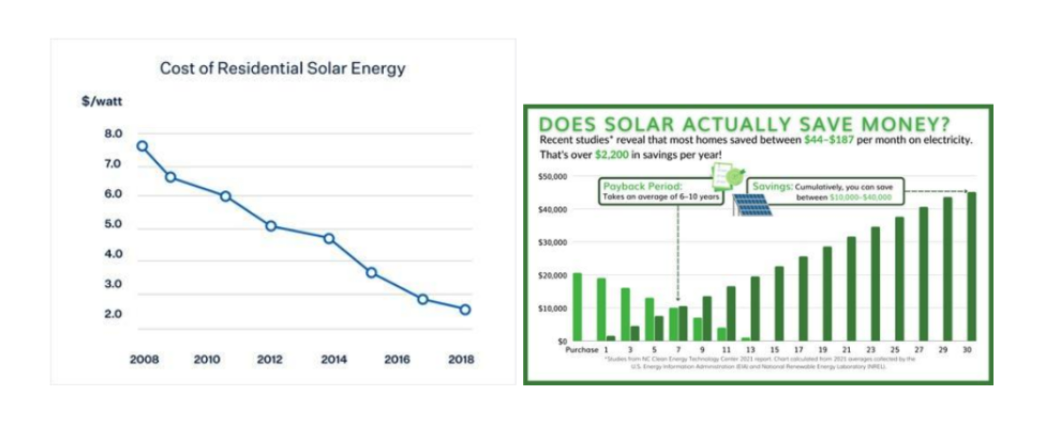Electrical energy generally requires fossil fuels that can exacerbate the effects of climate change. To avoid such impacts and switch to greener solutions, there is photovoltaic technology as an alternative. How does it work and what are the benefits in the long term?
What is photovoltaic technology?
Photovoltaic technology is a system that can convert sunlight into electrical energy. Generally, this technology consists of several solar panels called cells on the roof of the building. One cell produces 1 or 2 watts of electricity, but when combined with other panels, the energy supply becomes more.
In addition to panels to capture sunlight, photovoltaic systems also come with stands to maintain the position of the cells and inverters to convert DC energy from solar panels into AC energy for electronic equipment.
How good is the rate of return of solar photovoltaic panels?
Although it depends on various factors such as the amount of sunlight, the price of solar-powered electricity, and electricity consumption over a certain period, the photovoltaic power supply system has an excellent rate of return.
Globally, the price of solar electricity is getting more affordable from year to year. Trends that this promise also comes with the average price of installing solar photovoltaic panels which increases in savings. Thus, you will benefit even more by having an additional electricity supply from sunlight.
Thanks to the subsidy system from PLN (The Indonesian National Electricity Company) for solar electricity, you can save electricity bills as much as approximately 65% per month. Taking into account the scheme in addition, you can cover the cost of implementing photovoltaic technology in less time than eight years, especially with the durability of solar panels that exceed one decade.
In addition, over time, the savings generated from solar electricity will also continue to increase.

Examples of countries that use photovoltaic technology
Here are some countries that have applied photovoltaic technology as a source of electricity for its citizens.
1. China
As the world’s largest solar power producer, China has more than one large-capacity solar power plant. Some of the famous ones are Longyangxia Dam with four million photovoltaic panels and a solar power plant in Tengger Desert with more than 1,500 megawatts capacity.
2. Japan
Since the Fukushima nuclear radiation disaster, Japan has switched to electric power. Solar is considered safer for the environment. In an effort to revitalize the area that was affected, photovoltaic solar power plants amounting to 2.9 megawatts were built on the dam. Besides generating more electrical energy for residents, these public facilities are also useful for preventing flooding.
3. United Arab Emirates
The United Arab Emirates also has a photovoltaic power plant included in one of the largest solar power plants in the world, namely Sweihan PV IPP. With a capacity of up to 1,177 megawatts, Sweihan PV IPP is estimated to meet the needs of more than 195,000 households and reduce national carbon emissions by seven million tons per year.
Advantages of photovoltaic solar panels
Photovoltaic technology has a number of advantages for homes and offices. Some of them are below.
1. Easy to install
Before using solar electricity, one only needs to install a special iron stand and an ordered photovoltaic cell. Then, connect all existing components and cables to activate the solar panel system. This process will take approximately a day.
2. Cost-effective
The price of photovoltaic solar panels is relatively affordable, both in terms of installation, use, and maintenance. In other words, you can save electricity costs through relatively stable prices per month. In addition, because solar panels can last for years, photovoltaic solar panels do not need much maintenance.
3. Eco-friendly
Photovoltaic technology has a much smaller carbon footprint compared to fossil fuels. In addition, the energy produced from solar power is also cleaner. Therefore, there is no negative health effects of excess carbon production.
4. Can be used anywhere
Because photovoltaic technology can capture direct or indirect sunlight, it can be used in cloudy areas. So, there is no need to worry if the location does not always have the best sunlight.
Photovoltaic solar panels can realize green building strategies by producing clean and efficient energy without disrupting the daily routines of building occupants. So, it does not rule out the possibility that solar power initiated by photovoltaic technology will be the dream energy source of the future.


